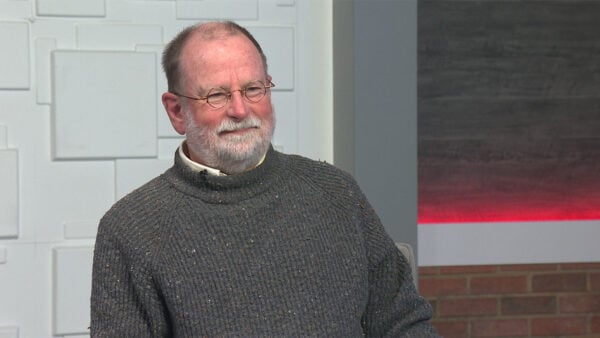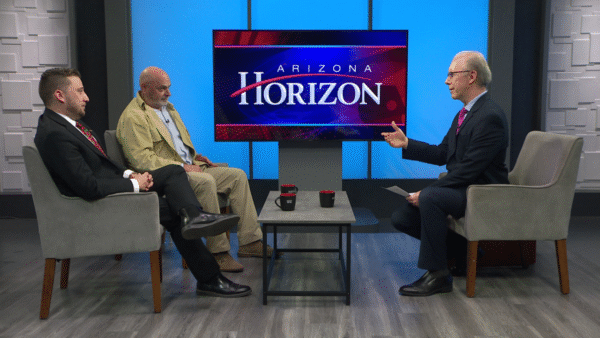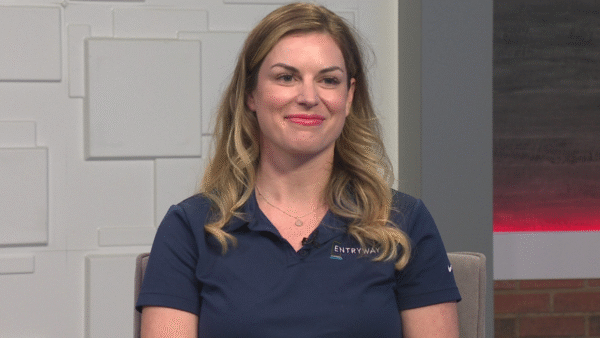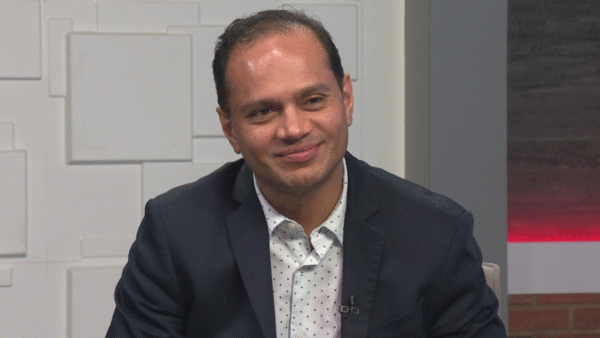Andrew Pielage is a local photographer who is trying to take pictures of all of Frank Lloyd Wright’s designs. Hear from Pielage about his effort and see some of his work.
Pielage has shot 50 Frank Lloyd Wright designs and has 482 to go.
Ted Simons: Comping up, how lights from computer screens can be bad for your eyes.
Ted Simons: Blue-light from phones, computers and fluorescents could be damaging to your eyesight. It could also make it harder to get to sleep. Here to explain all this is local optometrist Dr. Stephen Cohen.
Stephen Cohen: Good to be here.
Ted Simons: What is blue light?
Stephen Cohen: We are exposed to radiation we can see, ultraviolet, x-rays. Then there is the ultraviolent we can't see, all of the colors of the rainbow. It's known it's damaging to the skin. It can also be dangerous to our eyes. Blue light is next to ultraviolate on the spectrum.
Ted Simons: The shorter wavelengths make all of the difference.
Stephen Cohen: It does.
Ted Simons: The main source of blue light is the sun.
Stephen Cohen: Absolutely.
Ted Simons: Compare, and we are talking about iPhone and tablets, computer screens -- compare being indoors all day to outdoor all day?
Stephen Cohen: We need blue light. It has benefits. It wakes us up, makes us more alert. It can help with the sweep cycle, but what happens with blue light, if we don't have enough, it can cause depression. Here in Arizona, 300 days of sunshine a year but there are parts of the country that have little. There is a condition called seasonal dysfunction disorder. The challenge now is that we have so much exposure to it throughout the day, fluorescent lighting, computers, iPhone, iPads.
Ted Simons: Proximity to the screens, does that make a difference?
Stephen Cohen: It certainly does. The closer it is, the more the emissions impact us.
Ted Simons: Kids, I imagine, absorb more than adults because they are not fully developed yet?
Stephen Cohen: I'm old enough to remember a time when people laid out in the sun with deflectors and baby oil. Children have queerer eyes so the radiation penetrates deeper. We have kids spending so much of their day looking at these devices instead of large muscle activities.
Ted Simons: The shorter wavelength hits the retina where macular degeneration could be a factor here?
Stephen Cohen: Yes, blue light depletes melatonin. It's estimated there is a 10% reduction in the remember sleep so important to us. It's associated with type ii diabetes and cardiovascular disease. It's affecting the macular degeneration. It's identified as one of the causes, maybe the exposure to blue light.
Ted Simons: Do we find people that live in climates like Arizona, do they have more macular degeneration?
Stephen Cohen: We see it with people with fair skin and light eyes for the same types of reason.
Ted Simons: How do we protect ourselves from blue lights? We have phones and computers.
Stephen Cohen: Stephen Cohen: There are a number of things to help. One is to moderate. We used to ask if you use a computer? Now we say, how many hours do you use the computer. Stop using computers and handheld devices an hour before bedtime because that's when the melatonin is at the greatest level. There are glasses to block glare and a good portion of blue light and there are supplements. Spinach and kale are high in an anti-oxygen called lutein. That has a protective element as well. There are antioxidants to maintain the density in the back of the eye.
Ted Simons: Interesting. You can't wear certain sunglasses at work in front of a computer screen. Are there things to put over the screen or cellphone?
Stephen Cohen: Good question. The coating for the sunglasses are almost clear. There are things to be used to reduce the amount of blue light. Apple on their iPhone have an adjustment to turn them down at night.
Ted Simons: Say you have an iPad and you are reading, and you turn it down to a dimmer setting that's better for your eyes?
Stephen Cohen: It's an interesting thing. It's turning down the blue light that penetrates deeper. What do we do? We are having trouble sleeping so we pull out the iPad. That wakes us up further.
Ted Simons: I guess we should look for protection against the blue light and take it easy with the computer screens.
Ted Simons: Nice to have you here.
Andrew Pielage: Photographer
























